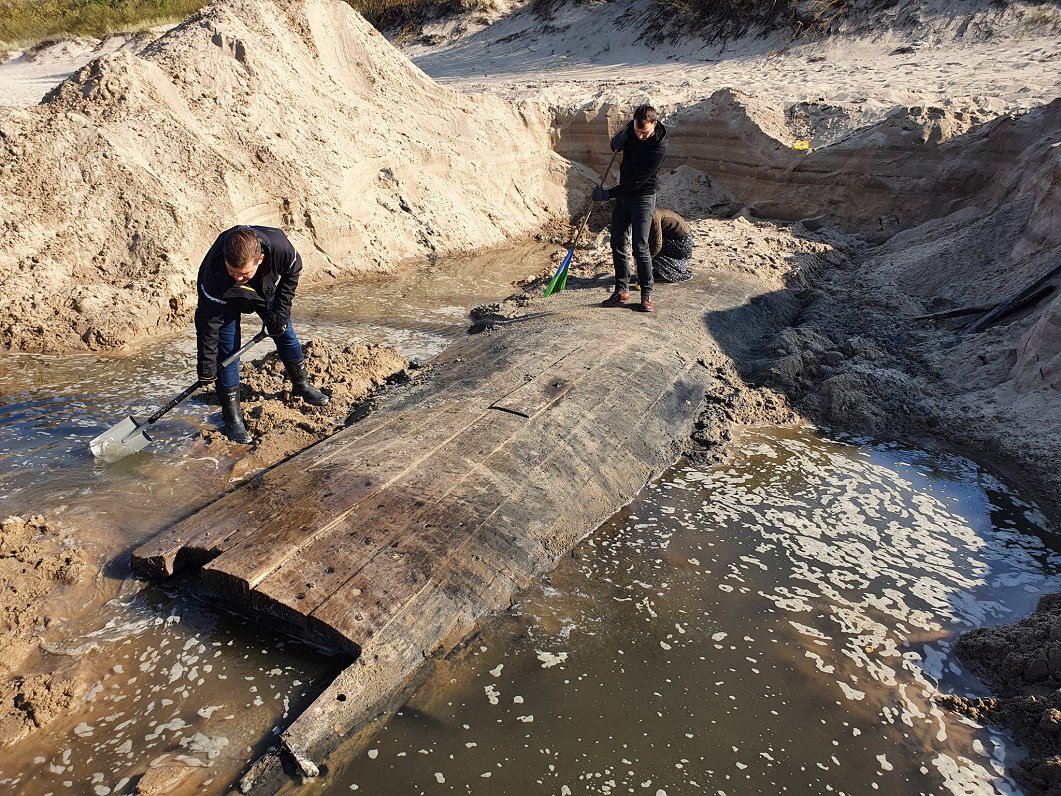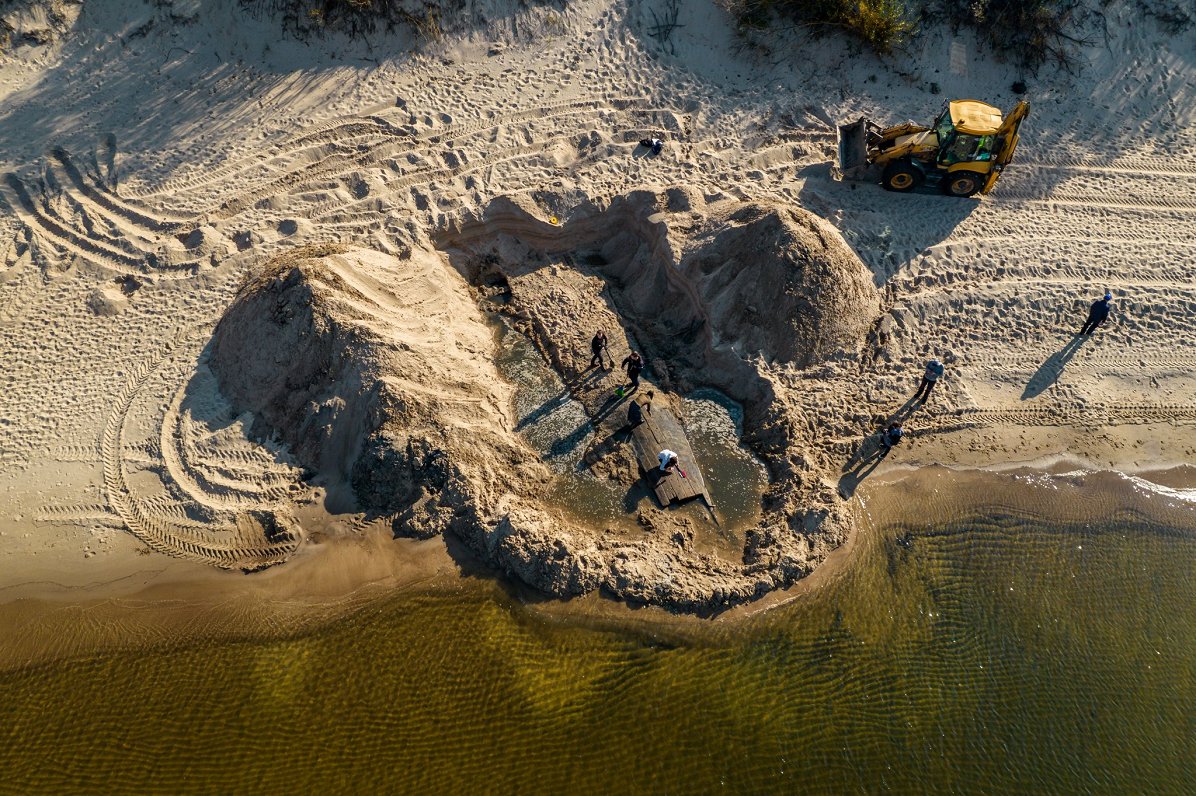"A few weeks ago, an unprecedented event in Latvian underwater archaeology took place, when a large shipwreck, which was found in September 2021 right here on Daugavgrīva beach, was moved," revealed Meinerts, who supervised the works.
The huge wreck could not remain at the place of discovery for a long time, because the erosion of the shore was happening very fast, and would damage or destroy it, so a couple of weeks ago it was unearthed, pontoons were attached to it, and it was dragged through the water and re-sunk in a safe place – in the waters of Vecdaugava.
The large shipwreck had to be sunk again, because there is no museum in Latvia that could undertake to preserve and exhibit it. The situation is different in Estonia, where the Maritime Museum exists and where similar and even older finds are already exhibited.

"There was no museum in Latvia that would accept it. Unfortunately, we do not have a maritime museum, and this is a very big problem, even a shame, in a way. We are the only Baltic Sea country that does not have its own maritime museum, which also greatly hinders the development of more active research," said Meinerts.
The researcher admitted that the specific shipwreck is not the most valuable and interesting find, taking into account that it is most likely from the middle of the 19th century, but it once again made it clear that, unfortunately, underwater archeology is not sufficiently developed in Latvia.
"Underwater archeology in Latvia has remained in its infancy for a long time, so I really hope that in the coming decades there will be new researchers who will also be diving underwater archaeologists," he said.
Speaking of underwater archaeology more generally, Meinerts said: "The idea of underwater archeology has always been to transfer methods that we know well and have tested in land research and try to implement them underwater. Then, of course, a series of different technical difficulties arise - it happens underwater, there is poor visibility, it is physically difficult to do it , there are currents, turbidities. In fact, underwater archeology is largely about trying to overcome these technical difficulties."
Unlike archeology on land, where many methods have not changed that much since archeology emerged as an academic discipline in the late 19th century, in underwater archeology it is technology that has contributed immensely. Without technology, lasers, scanners and satellites, it would be impossible to find underwater objects to study at all.
"Underwater archeology could even be divided into two parts – one is the story of the research work, when something is dug and uncovered, and the other is the process itself, to realize what objects are actually in this unknown space under water. This second part is very time-consuming , very resource-intensive and in a way even more important and complicated than the first one," said Meinerts.
"That [explored waters] percentage is actually very small. If we imagine the classic world map standing on the wall in a school, in a geography classroom, then all those big blue areas, which are the vastness of the great oceans with enormous depths, are almost unknown, if we speak from the perspective of underwater archeology. Even in our own Baltic Sea, if we get further from the coast, in deeper waters, the percentage of identified territories there is also very, very small," Meinerts said.




























